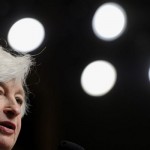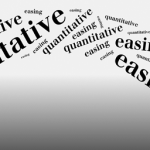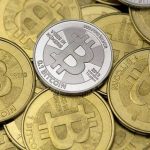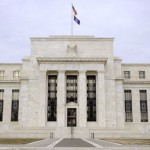Fed, Confident in Economy, Details End of Bond-Buying Program
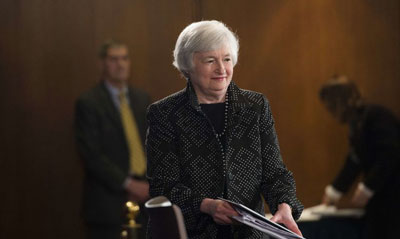
The Federal Reserve said on Wednesday that it planned to stop adding to its bond holdings in October, in a sign of its confidence that the economy is gaining strength even as the central bank gradually withdraws its support.
The decision, described in an account of the Fed’s most recent policy-making meeting in June, signals the end of one of the central bank’s most aggressive efforts to stimulate the economy. The Fed, which started reducing its monthly purchases in January, said it planned to add a final $100 billion to its holdings of Treasuries and mortgage-backed securities over the next four months, for a total of $1.5 trillion.
But the account underscored that many Fed officials remained guarded in their optimism about the economy. It also suggested that they had not yet decided when to take an even more important step in their retreat: raising short-term interest rates for the first time since December 2008.
Investors generally expect the Fed to start raising interest rates next summer. The Fed said the decision to end bond purchases in October, rather than continuing purchases at a nominal level until the end of the year, should not be interpreted as evidence that rate increases were likely to begin sooner.
“Most participants viewed this as a technical issue with no substantive macroeconomic consequences and no consequences for the eventual decision about the timing of the first increase in the federal funds rate,” the minutes said, referring to the benchmark interest rate that the Fed uses to influence borrowing costs for consumers and businesses.
Fed officials disagree about the pace of retreat in large part because they disagree about how much more monetary policy can accomplish. Five years past the end of the Great Recession, the share of adults with jobs has barely recovered, inflation remains below the level the Fed regards as healthy, and economic output remains weak. Officials are increasingly convinced that some of this damage is permanent — or at least, that it cannot be fixed by holding down borrowing costs — but they differ on the depth of the damage.
At the June meeting of Federal Open Market Committee, they debated why the housing market weakened over the last year, whether sidelined workers would return to the labor market in large numbers, and when inflation would start to rise.
Since last year, however, they have been in firm agreement that the time has come to stop buying bonds.
The purchases are intended to reduce borrowing costs for businesses and consumers, and to encourage risk-taking by investors. But the impact of the Fed’s asset purchases, and similar efforts undertaken by central banks in Britain and Japan, remains highly contentious. Officials and academics disagree about how much, if at all, the purchases have reduced the cost of mortgages and other kinds of consumer and business loans. They also disagree about the consequences. Warnings about inflation proved to be mistaken, but there is still concern the purchases have destabilized financial markets.
Officials in recent months have expressed particular concern that many investors have grown overly complacent about the Fed’s plans, mistaking its predictions about the likely timing of its retreat for bankable certainties. While that sense of certainty is helping to hold down borrowing costs, officials are concerned that it will come at a price if those expectations are disappointed. As investors have discounted the risk of losses, they have driven up asset prices in markets across the globe, raising concerns about potential bubbles.
“Low implied volatility in equity, currency and fixed-income markets, as well as signs of increased risk-taking, were viewed as an indication that market participants were not factoring in sufficient uncertainty about the path of the economy and monetary policy,” the account said in describing the Fed’s misgivings.
Such concern is a reason that Janet L. Yellen, the Fed’s chairwoman, has sought to emphasize that the central bank’s next steps depend on economic conditions.
Investors, so far, remain largely unshaken. “This concern about low volatility is somewhat ironic given that it’s their policies which are responsible,” said Luke Bartholomew, an investment manager at Aberdeen Asset Management.
While minutes did not clarify when the Fed planned to start raising interest rates, it did provide some new details about the mechanics.
Before the crisis, the Fed set policy by moving the federal funds rate, which is the rate banks pay to borrow money from each other to maintain required levels of reserves in their accounts at the central bank. But the Fed, in buying bonds from banks as part of its recent stimulus efforts, has flooded those banks with excess reserves, all but eliminating demand for interbank loans.
Fed officials are generally inclined to preserve the rate because of its familiarity as a communications tool, a point reiterated by the minutes. But future policy would be set primarily by raising the rate the Fed pays banks on excess reserves, along with a second rate it would pay to investors for short-term loans. Those two rates would be set at a fixed interval bracketing the funds rate like crutches.
Even after the Fed ends the expansion of the portfolio, it plans to maintain the size of its holdings by continuing to reinvest proceeds from matured bonds. Those proceeds, primarily from mortgage bonds, totaled $16 billion a month so far this year.
The minutes said most Fed officials favored maintaining this reinvestment policy until after the central bank started to raise interest rates, to focus public attention on what officials regard as the most important lever of monetary policy.
The account made for a striking contrast with the news conference held by Ms. Yellen three weeks ago, immediately after the committee’s meeting. At the time, she declined to discuss the details of the Fed’s exit strategy, saying that it remained under discussion and that details would come “later this year.”
Source: NYT









